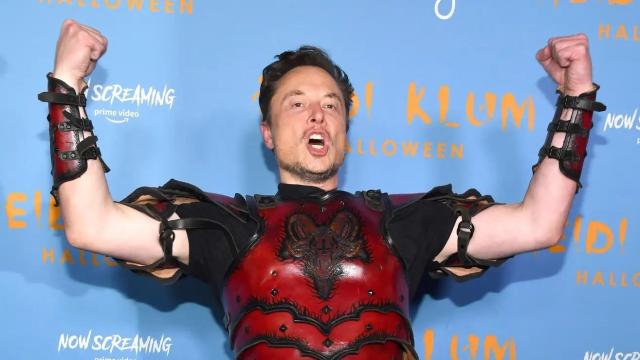Anyone who’s spent time observing the erratic, often contradictory behaviour of billionaire Elon Musk in recent years could be forgiven for believing he’s lost a sense of direction. That tale of chaotic mismanagement and petty personal vendettas, however, isn’t the narrative told by acclaimed journalist and biographer Walter Isaacson in a recent Time Magazine profile of Musk. In reality, the story argues, Musk’s apparent missteps at Twitter and Tesla in recent years were really short-term hiccups toward his master plan: A Hitchhiker’s Guide to the Galaxy-style artificial general intelligence.
AI, in one form or another, is already a critical complement in the products of Tesla, SpaceX, Neuralink, (Musk’s brain-computer interface company), and really of his other projects. Though these companies mostly operate independently of one another, the Time story claims Musk envisions eventually tying all of them together, along with his recently formed xAI startup with the ultimate goal of creating a powerful, general artificial intelligence. A combination of text data sucked up from Twitter users and real-world images captured by Tesla’s Full Self-Driving system, the story claims, means Musk could try to create both ChatGPT-style AI chatbots and physical robots capable of navigating the real world.
In Musk’s version of events, relayed during an interview with Isaacson, the red-pilled Twitter troll claims he recently realized he was spending too much of his time indulging his late-night Twitter antics. Musk claims he spent time contemplating a not-too-distant future where intelligent machines could make humans obsolete, something sci-fi writers refer to as “the singularity” and realized he “can’t just sit around and do nothing.”
“That could happen sooner than we expected,” Musk said of the singularity.
That fear reportedly led Musk to launch xAI. The new venture, which Musk claims is focused on “AI safety,” recruited top talent in the field like former Deepmind research engineer Igor Babuschkin. In the near term, the Time report notes, Musk has instructed xAI researchers to create an AI capable of generating computer code and a “politically neutral” chatbot competitor to ChatGPT. Longer term, xAI’s website says its goal is to “understand the true nature of the universe.” Musk previously worked on AI safety at OpenAI but cut ties with the company following its investment from Microsoft.
Isaacson has a proclivity for the misunderstood, quirky genius archetype. His past subjects include Albert Einstein, Steve Jobs, and Leonardo Da Vinci. If the Time article is any guide, it suggests Isaacson’s book-length biography of Musk set to release later this month will treat the South African billionaire with similar history-shifting gravitas and push back against the opposing narrative of Musk as a bumbling, at times bigoted, billionaire boy-child. During an interview with tech journalist Kara Swisher earlier this year, Isaacson called Musk, “the most interesting person around today.”
Twitter and Tesla Are Food for Musk AI God
Musk’s $US44 billion acquisition of Twitter last year, which he himself tried to squirm out of, has been rebuked by Musk’s critics as a financial failure, earning him the unglamorous Guinness World Record for the largest loss of personal fortune in history. But hidden in all that mucky mess, Isaacson notes, is actually a goldmine of Twitter user data that could potentially serve as the fuel to train a powerful AI system. Twitter’s corpus of more than a trillion tweets, which Isaacson refers to as a “humanity’s hive mind” could give Musk a fighting chance against the massive datasets already owned by competitors like OpenAI and Google. Musk admitted he only truly realized the value of Twitter’s data for AI after acquiring the site.
“It was a side benefit, actually, that I realized only after the purchase,” Musk said.
But Twitter represents just one head of Musk’s AI-Hydra, according to Time. Tesla’s semi-autonomous Autopilot and Full-Self Driving driver assist systems, Time notes, similarly suck up an estimated 160 billion camera image frames per day. Unlike the text-based Twitter data, the Tesla image captures show the vehicles interacting with the world, which, in some theoretical Musk fever dream, could one day be used to power AI for physical robots. In other words, that hulking monstrosity of a robot Musk showed off last year could actually get a brain. Maybe.
“Tesla and Twitter together could provide the datasets and the processing capability for both approaches: teaching machines to navigate in physical space and to answer questions in natural language,” Isaacson writes.
Twitter and Tesla did not immediately respond to Gizmodo’s requests for comment. Musk could not be reached for comment.
